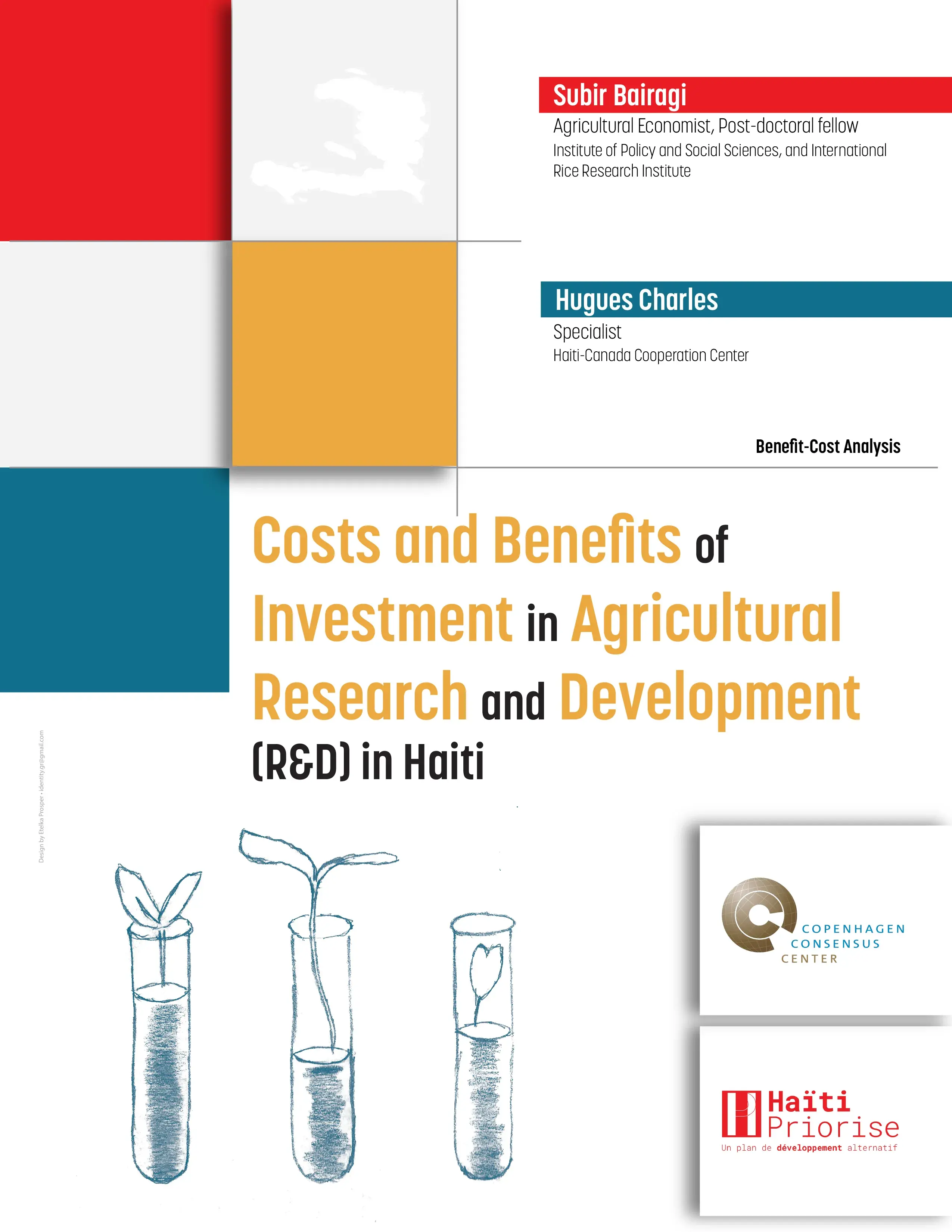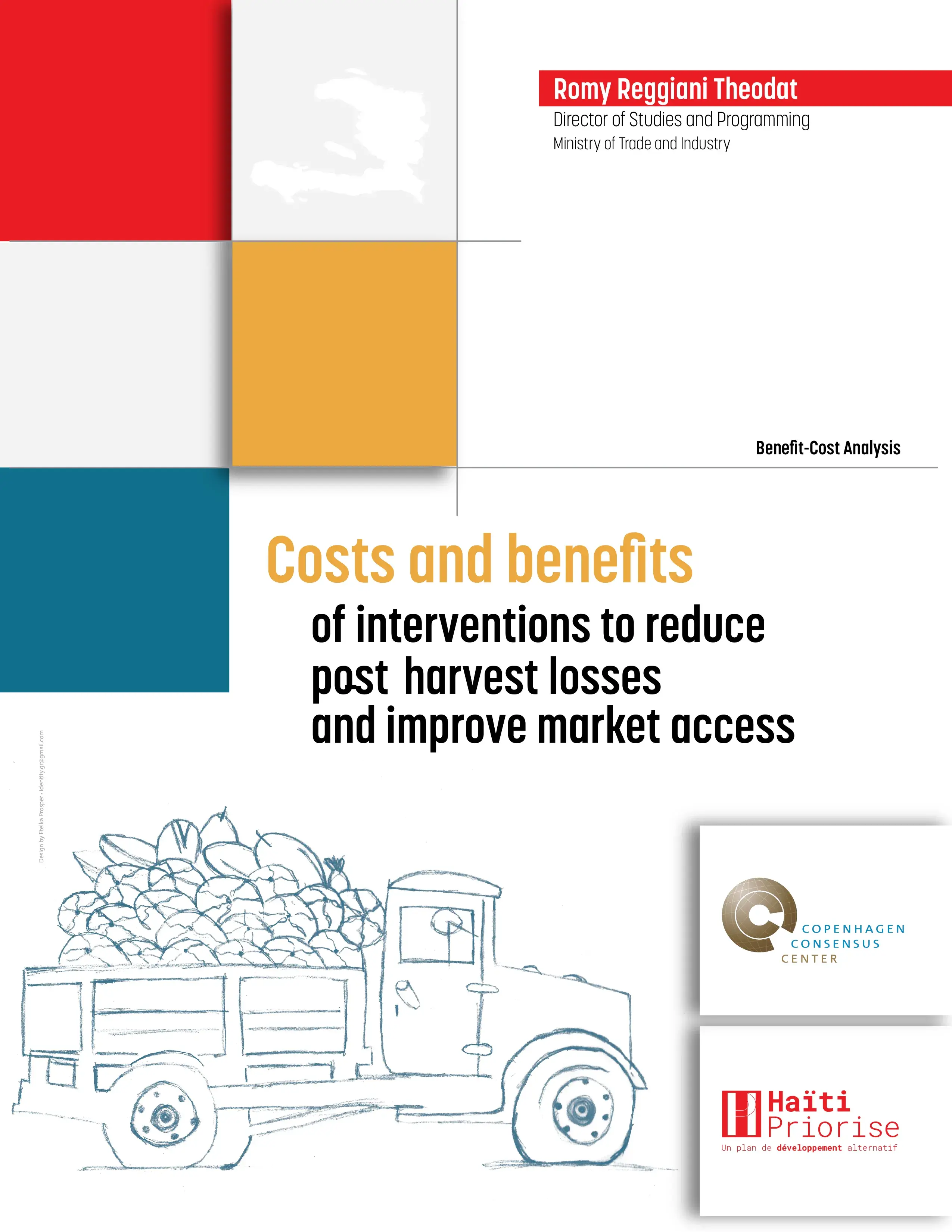Food Security
In June 2016, the World Food Programme undertook a food security assessment in urban areas. In the Metropolitan Area of Port-au-Prince, it found that 30 percent of the households are food insecure (about 750,000 people). The level of severe food insecurity is 2 percent (about 50,000 people).
Food insecurity was considerably higher in rural areas affected by drought, assessed in December 2015. Food insecurity is also driven by economic vulnerability, with half of urban households spending over half their budget on food. Increase in prices of food and other goods is the most common shock reported.
There are different ways to try to improve food security. One that is looked at is reducing post-harvest losses, which can make a contribution to reducing hunger and lead to output gains for farmers. Another approach is to invest in agricultural research and development to make crops more resilient.
Costs and Benefits of Investment in Agricultural Research and Development (R&D) in Haiti
Written by Subir Bairagi, Agricultural Economist, Post-doctoral fellow, Institute of Policy and Social Sciences, and International Rice Research Institute, this research looks at an initiative designed specifically to increase crop productivity: Investment in agricultural research and development.

Costs and Benefits of Interventions to Reduce Post-Harvest Losses and Improve Market Access
Professor Romy Reggiani Theodat of the Ministry of Commerce and Industry (MCI) looks at two complementary proposals to reduce post-harvest losses: introducing a crop transport truck system, and creating a packaging and conservation center.



